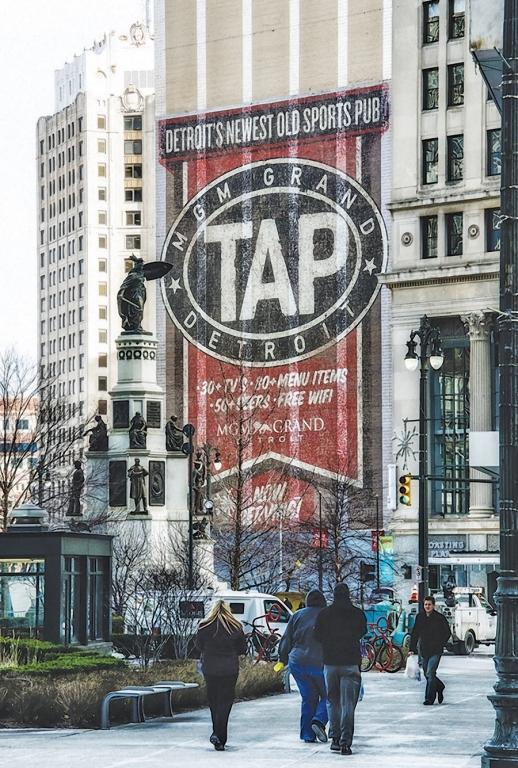When Detroit’s MGM Grand Casino’s TAP restaurant, “Detroit’s newest old sports pub”, which features a curated menu of more than 50 draught beers, wanted credibility with beer aficionados, they decided outdoor ads should mimic ghost signs.
Ghost signs are defined as old, (often more than a century), hand-painted advertising signage that has been preserved on a building for nostalgic appeal, or, more likely, due to owner indifference. Their lead-based paints contribute to their defining look; the paint clings to the brick surface in a way that modern paint formulations can’t.
Ghost signs exist in every small town and city across America, and everyone has seen one. But few people truly notice them. Like their namesakes, “ghost” signs exist in our minds’ peripheries, reminders of a bygone era, touchstones to a previous generation. That connection gives ghost signs their iconic appeal, and, in these fast-paced days of instant obsolescence, retro stylings add unique credibility.
As the MGM example illustrates, modern-day advertisers are starting to notice. In turn, more communities are becoming aware of ghost signs’ cultural value.
To be or not to be
Ghost signs, once ubiquitous, are disappearing at an alarming rate. Even as their popularity grows, the old, dilapidated brick walls that hold these signs together are being grit-blasted and painted over, or are routinely torn down.
When considering what to do with these ancient advertisemernts, three options arise:
• Conservation often occurs if the ghost sign contains an especially iconic logo, such as “Coca-Cola,” or incorporates beautiful handlettering that adds to a scenic streetscape. Municipalities often opt for this route. Conser-vators chemically stabilize the sign so that paint loss slows dramatically, which increases the ghost sign’s lifespan.
• Restoration is often chosen to bring back the vibrant colors or to serve as a “time machine” that captures a sign’s century-old look. Have a talented “wall dog” work on the project. A clumsy resto-
ration can ruin a sign’s appeal.
• Deterioration adopts a “hands off” approach and allows time and nature to take their toll. Obviously, budget concerns are driving factors.
Vigorous debate surrounds these three solutions, but each sign offers unique attributes: location, artistc merit, level of deterioration, and the wishes of the community all come into play.
Advertisement
I believe stabilization most often is the best choice; I prefer to err toward safeguarding the sign. That said, I’ve seen wonderful restoration jobs that really add to a revitalized business district.And, as seen with Detroit’s TAP sports pub, many designers and developers are noticing ghost signs’ power.
TV shows such as Mad Men, American Pickers and Pawn Stars tap into the nostalgia factor to promote the mythical, rock-ribbed value system of previous Americans. Auto manufacturers, clothing and furniture designers also work very hard to evoke a time when things seemed simpler and, by extension, better.
It makes good sense that sign designers, often the creators of the most iconic markers of this genre, should get in on that action.



 Tip Sheet4 days ago
Tip Sheet4 days ago
 Business Management2 weeks ago
Business Management2 weeks ago
 Real Deal5 days ago
Real Deal5 days ago
 Women in Signs2 weeks ago
Women in Signs2 weeks ago
 Benchmarks2 days ago
Benchmarks2 days ago
 Editor's Note1 week ago
Editor's Note1 week ago
 Women in Signs5 days ago
Women in Signs5 days ago
 Line Time2 weeks ago
Line Time2 weeks ago









